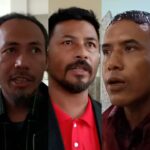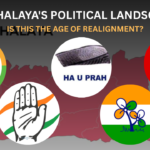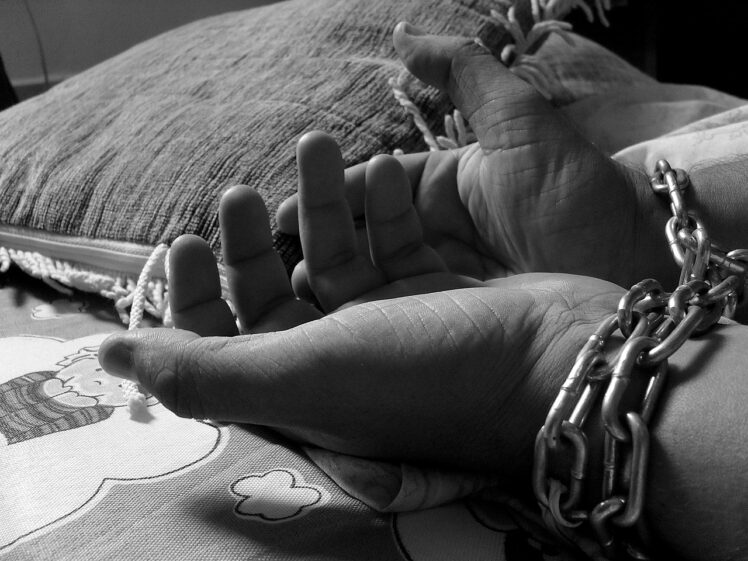
The saying “crime doesn’t pay” may be true in some contexts, but it does not apply to human trafficking. Traffickers are raking in record illegal profits while victims are left economically disadvantaged, with deep emotional and physical scars.
According to an updated report published by the United Nations in March 2024, there has been an increase in traffickers’ annual profits since 2014. The current estimated traffickers’ yearly profits are a staggering $236 billion.
WHAT IS HUMAN TRAFFICKING?
Human trafficking is a severe and pervasive crime that involves the exploitation of individuals through force, fraud, or coercion for various forms of labor or sexual exploitation. It is considered a form of modern-day slavery, and it affects millions of people globally, including men, women, and children.
It consists of three core elements: the act, the means, and the purpose. The act involves recruitment, transportation, and harbouring of the victims; the means involve threat or use of force, coercion, fraud, deception, abuse of a position of vulnerability, etc; and the purpose is solely for exploitation.
Human trafficking is a critical issue all over the world. Owing to the lucrative nature of the crime, humans, especially women and children, are being trafficked, and sold into bonded labour and prostitution. It is an organized crime that has plagued societies for centuries – In the present context, it is a modern form of human slavery.
India recorded as many as 10,659 cases of human trafficking between 2018 and 2022. The data tabled by the Ministry of Home Affairs in December 2023, reveals that an average of about 2,000 cases were recorded every year, with 2022 registering the highest of 2250 cases.
States like West Bengal and Assam are considered source States while Maharashtra and Karnataka are destination States.
HUMAN TRAFFICKING IN MEGHALAYA
Coming close to Meghalaya, the state is no stranger to this crime. In the last ten years – from 2013 to 2023, Meghalaya recorded a total of seven cases of human trafficking – 1 each in 2016, 2018, 2021, and 2 each in 2019 and 2022.
“This crime can be broadly categorized into three categories – trafficking of women and children – both males and females, for bonded labour, child labour and the third is sexual labour – a very challenging issue. Yes, there are organised groups but we can’t be certain as far as their whereabouts are concerned (sic),” said Deputy Chief Minister in charge of Home, Prestone Tynsong.
To make officers from the police department and other line departments, including NGOs, law practitioners, and students, aware of the different types of trafficking and the laws to counter this crime, Meghalaya police on August 21 organised a state-level conference on Anti-Human Trafficking in the State Convention Centre here in Shillong.
“Let this conference send its submissions and suggestions on the different types of clauses or provisions to be included in the existing laws – be it state or central, to make them more stringent. If it is in the state, we will take it up in the cabinet or if it has to do with central law, we will take it up with the concerned ministry,” the Home Minister stated.
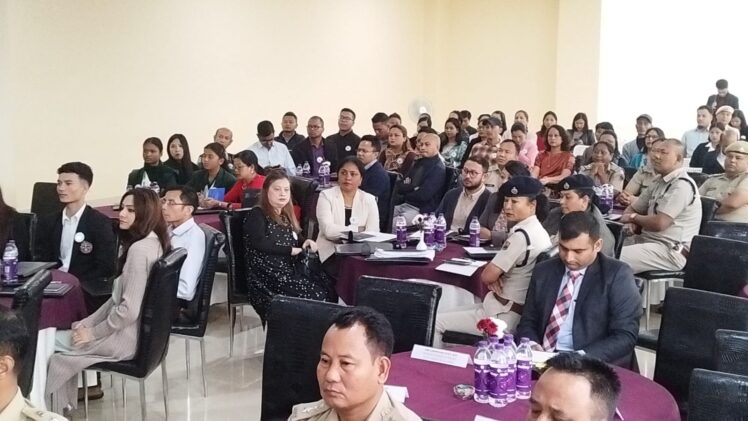
CULTURAL AND SOCIO-ECONOMIC FACTORS IN NORTHEAST INDIA
Different factors push a victim into a trafficker’s grip. These include — poverty, economic hardship, economic disparity, lack of education, low status of women, low skill levels, government’s encouragement of export labour, sexual/physical/emotional abuse at home, abuse by a husband, desertion or death of a husband, poor support in the family system, drug addiction in the family or an individual and conflict or wars.
“We are prey to predators who use socio-psychological approaches. The objectification of humans as commodities is horrible,” said the Chairperson of the State Women Commission, Iamon Syiem.
In Northeast India, a cultural factor is also an important component that cannot be overlooked. Tribal societies are considered egalitarian; a lot of tribals value relationships; there is always this sense of kinship where they tend to treat everybody as their kinsmen. It is dangerous in today’s world.
“We need to teach our children to be cautious, careful, and weary and not to treat anyone and everyone as ‘mama’ or ‘uncle’,” Syiem exhorted adding that traffickers prey on people’s weakness and their aspirations of landing a dream job and a better life in another part of the country.
NEW TRENDS
With new technologies, come new avenues for traffickers to prey on vulnerable groups. There is a need to redefine whether technology and science are materialistic achievements, given the prevalence of several cases of organ trafficking that have been there throughout history.
“Now we have modern human slavery. We don’t see trafficking, it is invisible but it is happening right under our nose. Children are blackmailed and prostituted right under their parents’ noses. There are these leakages where human insensitivity and darkness prey on vulnerability that manifest in so many ways,” said Chairperson of the State Women Commission Iamon Syiem.
With the advent of technology, thanks to the invention of the computer and communication revolution – traffickers prey on their victims virtually. Other than this, there are other new trends like nuclear families, frequent use of social media platforms like Facebook and Instagram, anonymity, online exploitation, use of dark net and TOR browser, and cash transfer online.
“With the help of social media platforms like Facebook and Instagram, traffickers identify vulnerable young adults and lure them into a deceitful relationship or on the pretext of providing employment,” said Deputy Inspector General of Police (CID) CV Subba Reddy.
ALSO WATCH:
He cited two cases that were registered in 2015 and 2022 in the state of Meghalaya. The 2015 case involved a minor girl being trafficked and sold to a man in Rajasthan for Rs 2 lakh. She was rescued 8 years later, in 2023. The 2022 case revolved around a minor girl who apparently eloped with a man she met on social media. She was later traced in Bangalore and later rescued in 2023 with the assistance of Karnataka Police.
“Police need to give more importance to missing cases, eloping cases, and love affairs involving minors because in most cases, they turn out to be human trafficking cases,” said Reddy.
There is a need for the government to increase budget allocation towards technology because traffickers are always one step ahead.
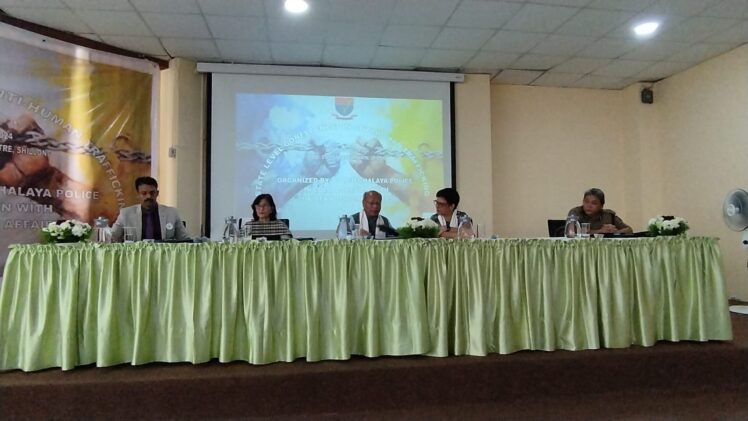
WHAT ARE THE DIFFERENT LAWS TO COUNTER HUMAN TRAFFICKING?
Trafficking in Human Beings or Persons is prohibited under the Constitution of India under Article 23 (1). Then there is the Immoral Traffic (Prevention) Act, of 1956 (ITPA) which aims to prevent the commercialisation of vices and the trafficking of females.
The legal framework against Human Trafficking is further strengthened by the New Criminal Laws.
- The Bharatiya Nyaya Sanhita (BNS) 2023 has a victim-centric approach to women and child trafficking.
- Newly-introduced offence of organised crime in BNS 2023, includes trafficking of a person, and human trafficking for prostitution or ransom, and provide stringent punishment.
- The act of buying a child for prostitution has been dealt with enhanced punishment with a mandatory minimum punishment of 7 years extendable to 14 years.
- The offence of importation of persons from a foreign country is made gender-neutral. It covers the importation of both boys under 18 years and girls under 21 years for the purpose of forced or seduced sexual exploitation.
- Beggary has been added to the expression ‘exploitation’ for the purpose of human trafficking.
- BNS prescribes enhanced punishment for a person indulging in habitual human trafficking.
ALSO WATCH:
APPLICABILITY OF THESE LAWS IN MEGHALAYA
Probably only the police (not all) and law practitioners are aware of the different types of laws and their implementation. The questions remain – How applicable are these laws in Meghalaya? Do we have enough law providers, government lawyers, and advocates in the state?
There have been instances when the case is taken to court, the perpetrator is not convicted as there are a lot of drawbacks due to lack of evidence, said Home Minister Prestone Tynsong, adding, “Nevertheless, the state police and the government are working hard to crack these cases despite the challenges.”
Meanwhile, Law Minister Ampareen Lyngdoh has asked the state police to ensure that the law is applicable on the ground and not just on paper, ensuring that it comes to the rescue of the citizens in distress.
“Men and women officials have to come forward (to address the issue). You (the police) have to come forward with recommendations on the types of laws that can be implemented in the state… you need to point out the areas of concern so that we move ahead and address this concerning issue,” she added.
Efforts to combat human trafficking involve a combination of law enforcement, victim support services, public awareness campaigns, and international cooperation.
If you suspect someone is a victim of human trafficking, it is crucial to report it to local authorities or national hotlines dedicated to fighting trafficking.





